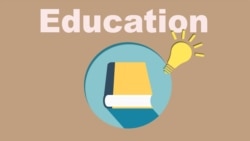For the first time in 12 years, the number of new international students attending American colleges and universities has dropped.
That information comes from the 2017 Open Doors Report on International Educational Exchange.
The report is a project of the Institute of International Education, a not-for-profit group in the United States, and the U.S. Department of State. The findings were released on Monday.
The Open Doors report has been documenting international student exchanges at American colleges and universities since 1954. The 2016-2017 school year marked the second year in a row that over a million international students attended the schools.
This time, the number of new international college students was about 10,000 less than a year earlier. That represents an almost three percent decrease from the 2015-2016 school year.
The latest Open Doors report did note a record year, with the largest number of international college students in the U.S. to date. But separately, the Institute of International Education noted a drop in the number of internationals seeking admission for the current school year. The average decrease, at almost 500 colleges and universities, was seven percent.
Allan Goodman is the president of the institute, also known as the IIE. He said the main reason for the decrease is economics. The cost of higher education nationwide has been rising over the past 30 years. Goodman noted that the United States faces greater competition than ever to provide top quality education.
“Countries and multinational employers around the world are competing to attract top talent,” he said at a press conference Monday. “As more countries … implement national strategies to attract them, the competition … will only intensify.”
Goodman also noted cuts to several programs that sent many international college students to the U.S. in the past. For over 10 years, the government in Saudi Arabia spent billions of dollars so that its citizens could study in other countries. But in 2016, falling oil prices led the government to make cuts to that program. This resulted in a 14 percent decrease in the number of Saudi Arabian college students coming to the United States last year.
Earlier this year, Brazil’s Ministry of Education announced plans to cancel a similar program. Started in 2011, the program helped send over 100,000 university students overseas to study the sciences. The new report noted that the number of Brazilians attending American colleges and universities dropped by about 32 percent.
However, some experts argue it is not just economics that are affecting the decrease in international students.
Philip Altbach directs the Center for International Higher Education in the Lynch School of Education at Boston College. Last year, he predicted a decrease in the number of international students coming to the U.S. His predictions were published in several opinion pieces.
So why is the United States suddenly less appealing? Altbach thinks the policies and behavior of President Donald Trump are partly to blame. And he believes those policies and actions could lead to fewer international students in the years to come.
“The US is seen as an unwelcoming country in the ‘age of Trump,’ Altbach told VOA. “This is combined with both the perception and … the reality that it is more difficult to obtain a US visa than it used to be. … The US remains the strongest … system in the world … but negative forces grow ever stronger.”
In the first month of his presidency, Trump announced a temporary ban on travel to the U.S. by citizens of several Middle Eastern countries. And in September, he announced an expansion of that ban to include other countries, such as Venezuela and North Korea.
Altbach adds that the rise of racist incidents at American colleges and cities does not improve the way the world looks at the United States. One example took place three months ago at the University of Virginia in Charlottesville, Virginia. White nationalists clashed with opponents near the school’s grounds. One woman and two male law enforcement officers were killed.
As the 2017-2018 school year began, several other schools reported finding racist images or messages on their campuses.
Recent violent attacks, like the mass shooting in Las Vegas in October, only add to the fears of international students and their parents, says Altbach.
But Marianne Craven argues that politics and other issues are not the only influences on peoples’ decisions to study in the United States. Craven is the Acting Deputy Assistant Secretary for Academic Programs for the State Department. She says that international students are much more concerned with the future an American education can offer them.
“Students make their choices of where to study with their long-term goals and career plans in mind,” Craven told VOA. She added “These are very personal decisions by students and their families.
Craven says the State Department’s Bureau of Educational and Cultural Affairs plans to continue building friendly relations between the U.S. and other countries. It plans to do so through educational, cultural, sports, and professional exchanges.
The number of people attending events designed to publicize American higher education in other countries remains strong, Craven adds.
While the United States may be facing a decrease in the number of new foreign college students, Canada is becoming more appealing. Between 2008 and 2015, the total number of international students at Canadian colleges and universities increased by about 92 percent.
A decrease in the number of international college students at American colleges and universities could affect the U.S. economy. The Department of Commerce reports that internationals students added about $39 billion to the economy last year.
I’m Pete Musto. And I'm Jill Robbins.
Pete Musto reported this story for VOA Learning English. George Grow was the editor.
We want to hear from you. How has the view of the United States and its higher education system changed in your country in the last five years? Write to us in the Comments Section or on our Facebook page.
_____________________________________________________________
Words in This Story
in a row – idm. following one after another
attract – v. to cause someone to choose to do or be involved in something
talent – n. a person or group of people with a special ability to do something well
implement – v. to begin to do or use something, such as a plan
strategies – n. a careful plan or method for achieving a particular goal usually over a long period of time
perception – n. the way you think about or understand someone or something
obtain – v. to gain or get something, usually by effort
negative – adj. harmful or bad
racist – adj. used to describe the poor treatment of or violence against people because of their race
campus(es) - n. the area and buildings around a university, college, school
professional - adj. done or given by a person who works in a particular job or industry
publicize – v. to cause something to be publicly known








